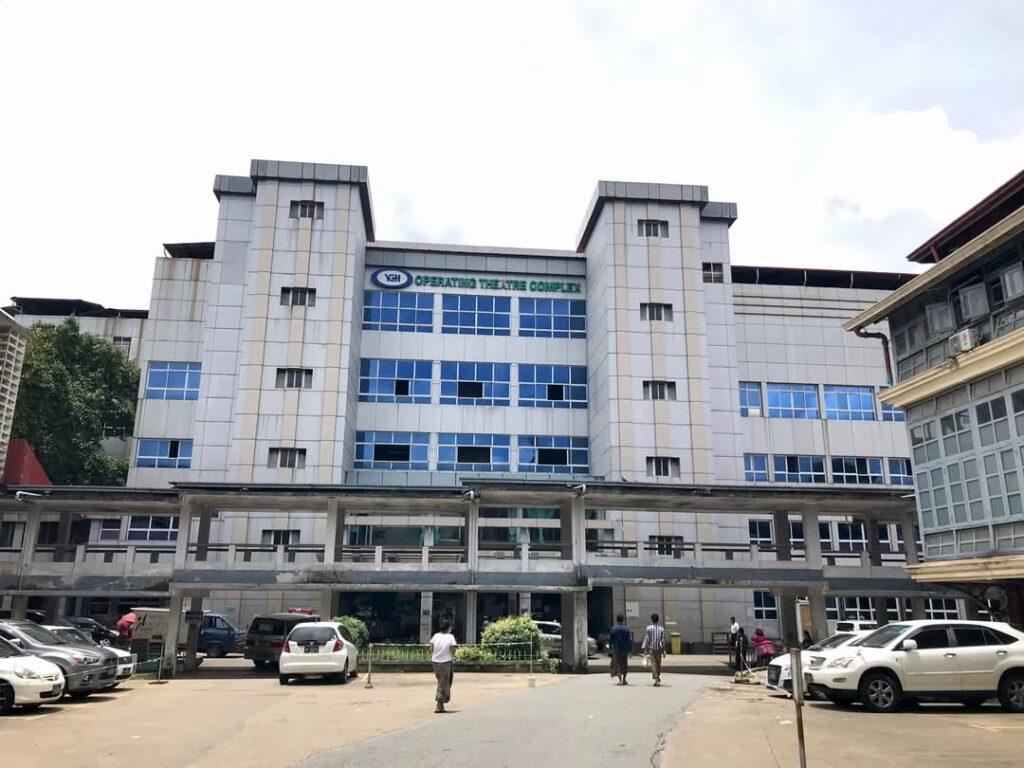What Services and Care Patients Receive from the Outpatient Department
Posted_Date
Image

Body
When people are afflicted with an illness or a disease, they visit the Outpatient Department (OPD) to receive the services and care it renders. The Outpatient Department is a medical facility of a hospital where patients can seek a vast range of medical care and treatments without the need for hospital admission. It is one of the first points of encounter between a hospital and patients with different medical conditions. In essence, the OPD services reflect the standard, quality and efficiency of a hospital.
The Outpatient Department (OPD) offers its services to a diversity of individuals with varying medical needs. Those who usually visit the OPD are patients with minor ailments or chronic conditions, patients requiring specialized consultation, patients referred from primary health care facilities, individuals needing medical diagnostics, individuals seeking immunization and preventive care, mental health patients, paediatric patients, elderly patients, rehab patients, expectant mothers and gynaecological patients.
Based on the types of services they render or the types of patients to whom they provide, the Outpatient Department (OPD) can be categorized into various types, and the common ones are general OPD, specialist OPD, medical OPD, surgical OPD, obstetric and gynaecological OPD, child OPD, cancer OPD and dental OPD. With a view to managing the patient flow efficiently and reducing waiting times, different appointment systems like walk-in systems, scheduled appointment systems, time-slot systems, specialist-specific systems, recurring or follow-up appointment systems, online appointment systems and telemedicine integrated systems are adopted by the OPDs across many healthcare settings.
The Outpatient Department (OPD) is designed to proffer a variety of medical services to patients who do not require hospitalization. When patients walk into the OPD, its staff receive and welcome them and then record and register their details and the reasons for their visits. These patients can consult with general practitioners or specialists according to their specific medical needs. In general consultation, the general practitioners will examine patients and evaluate their medical history. They will instruct patients to get the investigations and provide a diagnosis. They will, then, recommend patients a treatment plan and give them advice on how to manage their existing conditions and prevent future health problems. But, if required, they may refer patients to appropriate specialists based on their medical conditions. Alternatively, patients can directly book an appointment with specialists. In specialized consultation, specialists are inclined to pry a detailed history out of patients and go deeper in examining them by performing specialized tests and techniques. Patients will be recommended for advanced diagnostic tests like blood tests, biopsies, echocardiograms, stress tests, CT, MRI or other imaging for a confirmed diagnosis. These investigations are usually conducted within the OPD or at the associated facilities. Then, a treatment tailored to the diagnosis will be provided. Patients can purchase medicines from the on-site pharmacy or external medical shops. Patients are instructed to attend follow-up visits to assess the progress of their diseases or adjust their treatments. Minor procedures and wound care are conducted, and some injections are administered in the OPD. Procedures like dialysis or chemotherapy are also performed in a day-care setting. Vaccinations, routine medical check-ups and preventive screenings for cancer, diabetes and obesity are also available here.
The Outpatient Department (OPD) coordinates with other departments to provide collaborative, holistic care. Patients requiring advanced care or surgery are referred to the appropriate inpatient wards in the hospital. Rehabilitation and recovery support, like physiotherapy, speech therapy and nutritional advice, are rendered to patients recovering from severe chronic diseases or major surgeries. Mental health counselling and stress-management support are also provided. The OPD helps caregivers realize the conditions of their patients and train them on how to give care at home. Many hospitals use specialist rotation plans to meet the demands of patients effectively. The services of the OPD also include patient education and counselling, specialized referral, integrated health workshops, patient outcome tracking and training future medical personnel.
For the implementation of various services, the Outpatient Department (OPD) should be endowed with many essential physical facilities and amenities. These should include general and specialist consultation rooms, a reception counter, a registration desk, waiting areas, minor procedure rooms, examination rooms, treatment rooms, emergency rooms for unexpected urgent cases, a pharmacy, a nursing station, utility rooms, and toilets. All rooms and areas should be spacious, clean, well-lit and sufficiently installed with well-functioning air-conditioners to maintain a pleasant temperature. There should be enough comfortable seating arrangements for all who come here. Consultation rooms should be provided with adequate privacy and soundproofing for the interest of patients. The on-site pharmacy should be well-stocked with various items of drugs and medical products. There should be on-site diagnostic labs and radiological rooms equipped with advanced diagnostic tools. Handwashing stations, drinking water supply sites and sanitized toilets should be ready for utilization. The OPD should be designed to have a smooth, concrete and spacious floor which ensures an easy and convenient transport of patients using wheelchairs or trolleys. For all attendees, phone charging points, Wi-Fi, and a cafeteria should be provided in the waiting areas. They should be entertained with TV programmes highlighting health issues or booklets sharing health information to engage them during the wait.
A variety of staff should be assigned to perform the services of the Outpatient Department (OPD) ebulliently and efficiently. General practitioners and different types of specialists play a key role in providing services and care to patients. The common types of specialists are general physician, cardiologist, neurologist, endocrinologist, nephrologist, general surgeon, orthopaedic surgeon, neurosurgeon, plastic and maxillo-facial surgeon, paediatrician, gynaecologist, obstetrician, radiologist, pathologist, microbiologist, oncologist, eye specialist, ear, nose and throat specialist, mental health specialist, haematologist, rheumatologist. Nursing staff include registered nurses, specialist nurses, triage nurses and nurse-aids. The staff related to investigations are lab and radiological technicians. Pharmacy staff are pharmacists and pharmacy technicians. Administrative staff are receptionists, medical record staff and medical social staff. Support staff are security personnel and general workers. An administrative officer should be assigned to oversee administrative procedures.
When patients visit the Outpatient Department (OPD), their minds are overcome with a mix of emotions and concerns. They worry about the results of investigations of their diseases and possible diagnoses and treatments. Some are frustrated by their chronic conditions, prolonged waiting times and delayed procedures. Amongst many challenges and inconveniences in their daily lives, they have to come to the OPD in the hope of finding the best solution to their health problems. In the encounter with the OPD staff, patients, as a rule, expect to receive a warm welcome and smooth two-way communication from the staff, which makes them feel encouraged and supported. They also expect that doctors will provide them with a detailed discussion of their diseases and special advice on them. All patients prefer an individualized special care approach tailored to their particular health concerns. They value the timely information from the staff about appointment reminders and follow-up instructions through phone, message or email. They desire to be involved in making decisions on their own cases.
Therefore, to fulfil the expectations and satisfaction of patients, the OPD staff should treat them with respect and good public communication. They should show understanding, empathy and mercy to their concerns and challenges. They should provide complete and clear information about procedures, waiting times and next appointments. There should be efficient management to prevent queue jumping. The staff should maintain a high standard of professionalism in appearance, behaviour and communication. There should be an effective, streamlined process from registration up to the follow-up to reduce waiting times. They should keep the privacy and confidentiality of patients. They should be heedful of the diverse cultural beliefs of patients and adapt their communication styles to avoid misunderstandings and conflicts. They should be committed to continuous medical learning so that they can offer patients much more advanced and effective treatments at all times and help them regain their normal health, the greatest blessing in their lives. They should place great emphasis on vulnerable groups such as elderly patients, children or the handicapped. They should flexibly react to challenges which arise during periods of high patient volumes or when an unexpected medical or technical crisis occurs. Through these skills and attitudes, the OPD staff can comfort and encourage patients, fostering an atmosphere of care, empathy and professionalism.
Strategies for training the OPD staff to offer better services should include communication and empathy training, emergency response training, infection control and hygienic practices, continuous professional development, conflict resolution and stress management, continuous feedback loops, patient experience assessment workshop, cultural sensitivity training, quality and safety control training, incorporating technology in training, mobile app for continuous learning, cross-departmental training and team-building exercises. Incentives of various kinds should be offered to the staff by the management team to create staff satisfaction, which then leads to patient satisfaction.
In conclusion, for the Outpatient Department (OPD) can render more efficient and qualified services and care to patients, it must be equipped with a sufficient number of highly competent and dedicated staff and physical facilities. There must be a streamlined patient flow and a smart workflow to create the best advantage for patients. It must offer integrated, patient-centred care through a harmonious and united effort of all staff. However, the burnout risks of staff from overburdening must be strategically handled for their retention. The OPD should collaborate with the community to develop community-oriented services. It should foster a culture of excellent care, prioritize patient experience and develop a patient loyalty programme. It should help patients gain access to and continuity of care. Its far-sighted targets should include the improvement of the online booking system, telemedicine expansion, application of artificial intelligence in various procedures, holistic personalized medicine, a one-stop health hub and a community outreach programme.
Source: The Global New Light of Myanmar






